Small Family Birdhouse
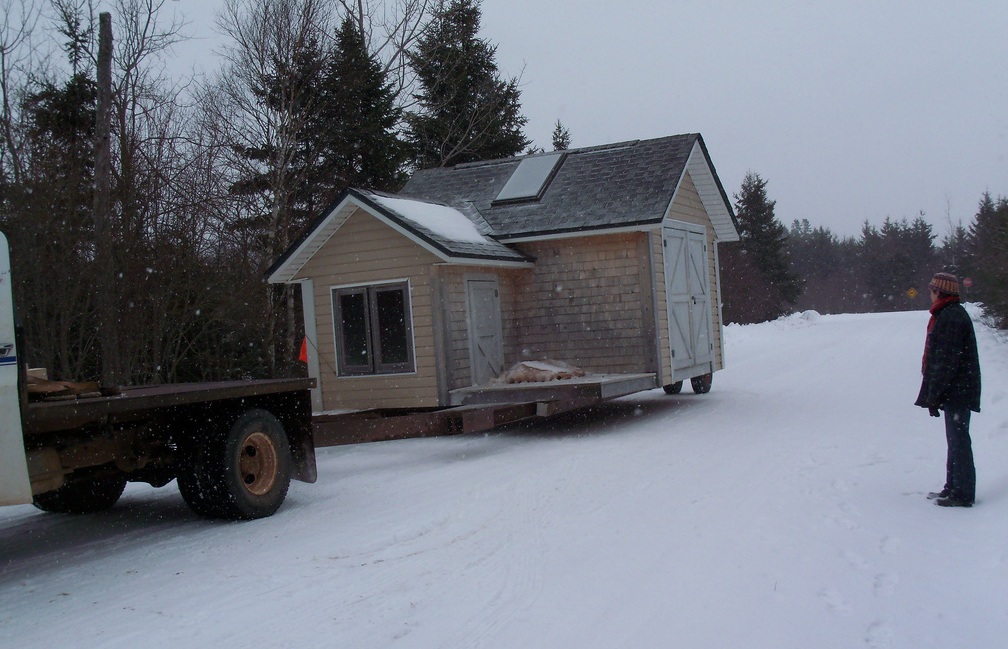
One question a lot of people have been asking recently centers around tiny houses and families. It’s true that many of the very small homes are inhabited by one or two people, so where are the tiny houses for families? Over the next few weeks I’ll be posting a few of those stories and some design solutions.
Here’s the story of Andrea and her son who are turning a shed into a livable home. Andrea sent me a detailed description of the cabin, the work completed so far, and the process of moving it to its present location.
Here’s her story:
“It started as a project about spending more time with my son, getting him out in nature a bit and forcing us to spend more time together with less distractions. We spent months drawing, sketching and bookmarking pictures we liked; he had tons of great design ideas.
The problem was we didn’t have any land and building would have taken more time away from him, not given to him. Then by luck we found this garden shed on kijiji. A local builder had used it as a playhouse/workshop and it wasn’t getting used, so we got it cheap. It was completely finished on the outside, including two skylights and a window in my son’s room. Nothing was done on the inside at all. We bought it and moved it to a site on a friend’s land and are now living in it full time until at least October.
I’ve spent a long time trying to figure out the difference between a cabin and house, and can boil it down to nothing more than intention. This is where we live. For now we’ve only rented out our place in town until late fall, until heating and electricity will become more important. I’m not sure we can afford it all this year, but while we are in it, and it’s our only home.
Since buying it in January, I have prepared the gravel and block pad, knocked out the wall between the rooms, insulated it, wired it (not hooked up yet), put in a stand-up shower, hardwood floors, kitchen cabinets, another window, rain gutters, and french doors.
There is a propane stove and fridge. The toilet is outside, just a good old luggable loo that will come inside it the fall. The stand-up shower is fed from a battery operated pump outside in a rain barrel. There is a bookshelf that closes in the one wall of the bathroom and a pocket door on the other. On the other side of this is my son’s room which measures 6’x6′.
We are about to rebuild a flip down bunk attached to the wall so the dog can sleep under him as it has been too dirty with the dog on his bed. My bunk is in the main room, a double bed with plastic containers for my clothes under the edges of the rafters.
Things I didn’t calculate; the importance of a yard (gets rather muddy), cost of propane lines and tanks, how we dry our clothes and store our tools and keep the place clean with a big dog. Fire wood… who knew it took so much time to get campfire wood? I’m learning to use an axe for the first time. For two weeks we didn’t have a fridge, funny as now I wonder if we need one at all!
The birdhouse is only 180 square feet and far from finished. I still need to fasten down counter top and place a sink inside. Two more windows are planned and the doors will likely only last the season as I had to cut them down so much their strength is too compromised. I plan to rebuild the bookcase to meet our needs better and hook up solar when we get some cash. For now we have 3 solar shed lights that have never run out, a battery light for back up and a crank radio. The shed lights are great, they have very long cord and can be unplugged and used like flashlights. I read by it even.
My long term plan is to live be in the birdhouse for 4-5 summers. Lots of things to consider about living there full time in the winter. First of all, it is borrowed land and has no civic number so I can’t get an electric pole or phone put in. Cell doesn’t work. I also can’t insure it so heating it is an added risk. There is also a financial aspect, that believe it or not, it may be more expensive than living in town.
It will get me a bit ahead financially, and I’ll get to know some neighbors, and eventually, hopefully, find a nice piece of land though a private sale. I will then either donate the birdhouse to the landowner and build something slightly bigger, or move it and add another room to it. I think the optimum size house for two of us is about 350 square feet of living space and a small mud room/entry for drying jackets boots etc.”
Shed Conversions
I see sheds like Andrea’s pop-up on craigslist from time-to-time and often they’re free. The main challenge with them is relocating them in one piece. It looks like once Andrea had that part figured out the rest fell into place.
The benefit of using a pre-built used shed is cost and effort. Often backyard sheds are built similarly to any stick-built home, just smaller. The main difference is usually that they are not finished inside. This actually makes them easier to move or dismantle because there’s less to lift or take apart.
Each shed is a different challenge because of their location and construction so there’s no one way to move them. This is actually one of the reasons you’ll find them cheap or free; when they’ve lost their usefulness they immediately become a burden or additional cost, like any unneeded possession.
Square Footage & Families
Families do need more space, and the number of square feet really depends on a number of factors. The main thing to remember when you begin to consider extreme downsizing is that our possessions is what takes up the most space, and eats up our time and mental energy.
So the first step for an individual or family is to begin chopping away at the stuff around you now. Focusing on the number of square feet you really need can help you visualize the goal, but the real work isn’t building a smaller space, its changing our minds about what we think we need.
For example, Andrea mentions living without a refrigerator for two weeks and then wondering if refrigeration is really a necessity. Things like refrigerators, that we tend to take for granted as requirements, may in fact be luxuries we’ve become dependent upon. If the luxuries empower us they are valuable tools. If they cost us too much, or are too difficult to sustain, they should be reconsidered.
Another big factor for families is understanding how everyone uses the home. For example if you homeschool your kids and/or work from home you will most definitely need more space. This space can be split into separate tiny buildings, if that makes sense for your location, or added on as extra rooms. The ultimate goal isn’t to have less space, the ultimate goal is to have the right amount of space to empower you, not hold you back.
The most important thing I want to say about families and tiny houses is that one of the main goals is to be able spend more time with the people around you. Andrea has found a way to strike a balance by taking the project slow, involving her son, and finding clever shortcuts like using a pre-built used shed as the base structure. It also sounds like they are also on a fun adventure together, which must make it as rewarding as it is challenging.
So if you have family members who are coming around slower than you are to this crazy idea of living simply in small spaces, give them the space and time they need to join you. This can require some patients but it’s definitely worth making the trip together.
Thanks again Andrea!
Andrea, thank you so much for sharing your story and tiny house with us. I’m looking forward to hearing how things develop!

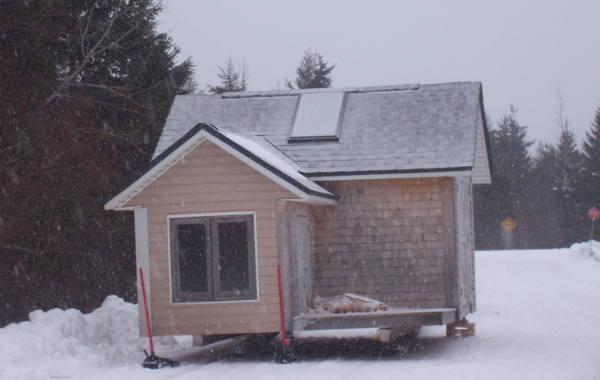
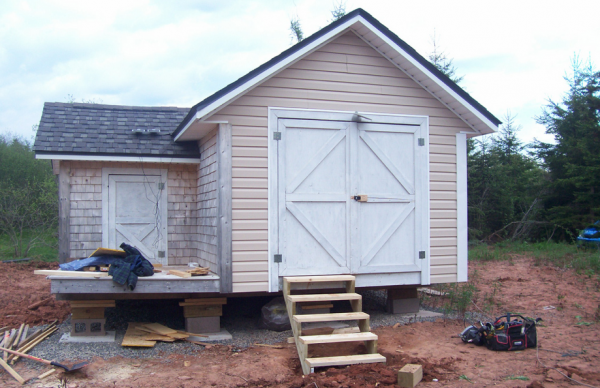

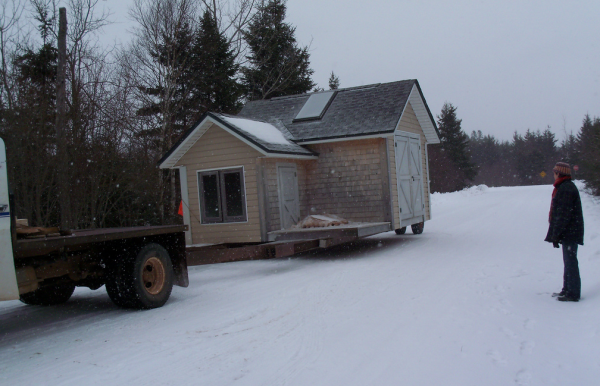
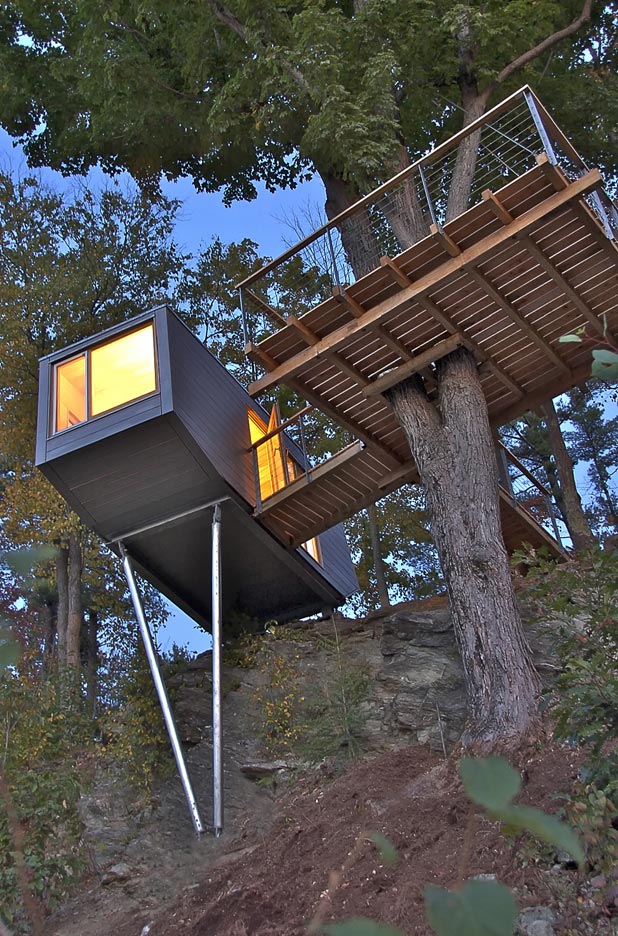
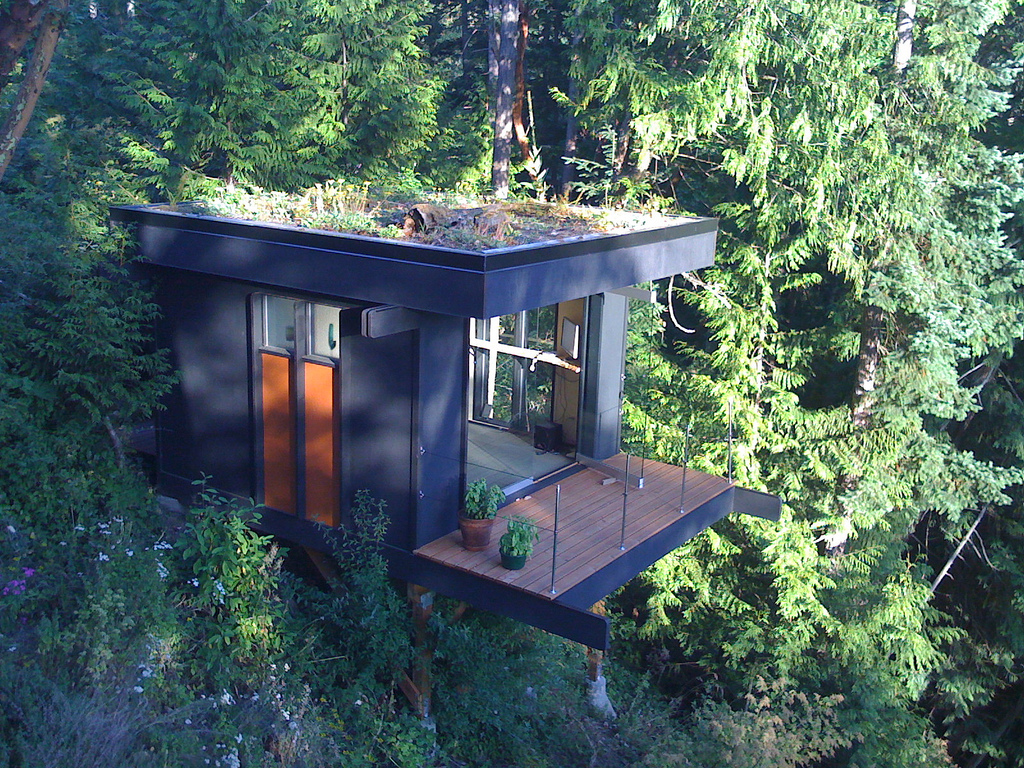
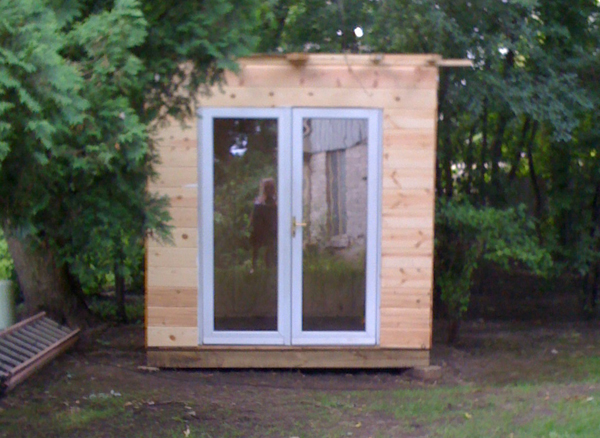
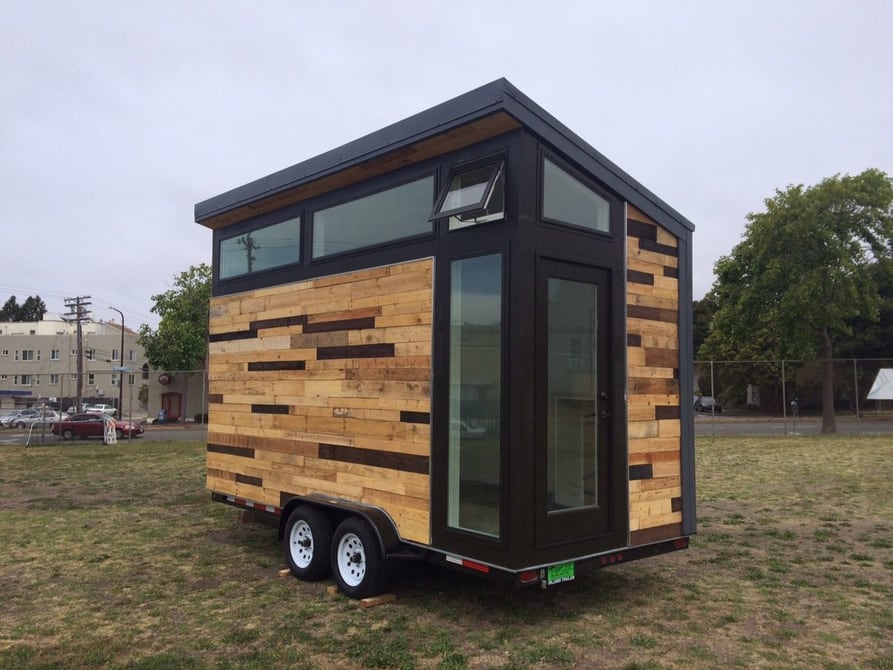
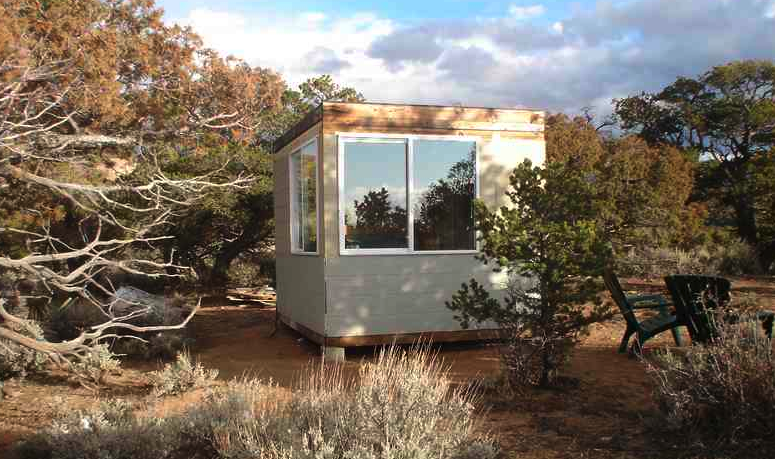
My family of four, including two teenagers, lives in 880 sq ft. Does that constitute a tiny home?
Hi Natalee… two teenagers? Yep I bet that feels like a very small house 🙂
LOL… jk
Maybe there’s some calculation that determines a small house, involving square foot per person, plus an incremental amount of free or common space depending on a variety of factors like home schooling, home business etc. I’m sort of joking, but there’s probably a continuum based on similar input. If you had 10 kids all living at home your small house would not be the same as one for 2 kids, but not all 10 kid families would need the same amount of space because of the way you use the space.
Hi there, I am quite new to this concept of tiny houses and extreme downsizing. My husband showed me the Tumbleweed Homes site about three weeks ago, and I can’t get the idea off my mind. The trouble is, we are thinking of starting a family. So, I feel extra pressure to know what I’m getting into before there’s a child involved. I know it’s more about the concept of downsizing rather than just square footage, but at this point it would be really nice to wrap my mind around some numbers. Can anyone suggest a site that helps you calculate how much space you need for a family of 3-4, based on your interests and how you plan to use the space? I’d be so appreciative. Thanks!
I think much of this depends on your philosophy of parenting and lifestyle. My son has always slept me didn’t get his own room unit he was almost 7. We never had a change table, a swing etc, so the number of feet he took up was minimal. Now he is in school, and is getting to the age where he needs a computer at home to do research etc, and so we’ll need to accommodate this. I really think it is about rationalizing rather making extreme attempts at minimization. His room is 6×6. It is small but it is his. I have spent a great deal of time contemplating how to ensure my son’s emotional well being in all of this, and hence the reason he has been a huge part of the planning. There are things that are “cool” that he can show off to his friends. He takes pride in our tiny house, rather than feeling ashamed or isolated by it. It really is a fine balance when raising kids, and I am trying to give him the skills and insight that many kids don’t get, while making sure he has the skills and insight that kids of his generation need in order to achieve their dreams. (hopefully in a much less consumer oriented world).
Hi Heather,
I don’t think there is a ‘right size’ that can be calculated for a family because it depends so much on the family. A few of wrote about it a while back: http://smalllivingjournal.com/category/issue-7-living-people-small-spaces/
I personally think that thinking modularly (multiple tiny houses) is the way to go, but this probably doesn’t with young kids since you want to be near them.
I have a post or two in the works with some detailed idead for families, so stay tuned.
-Michael